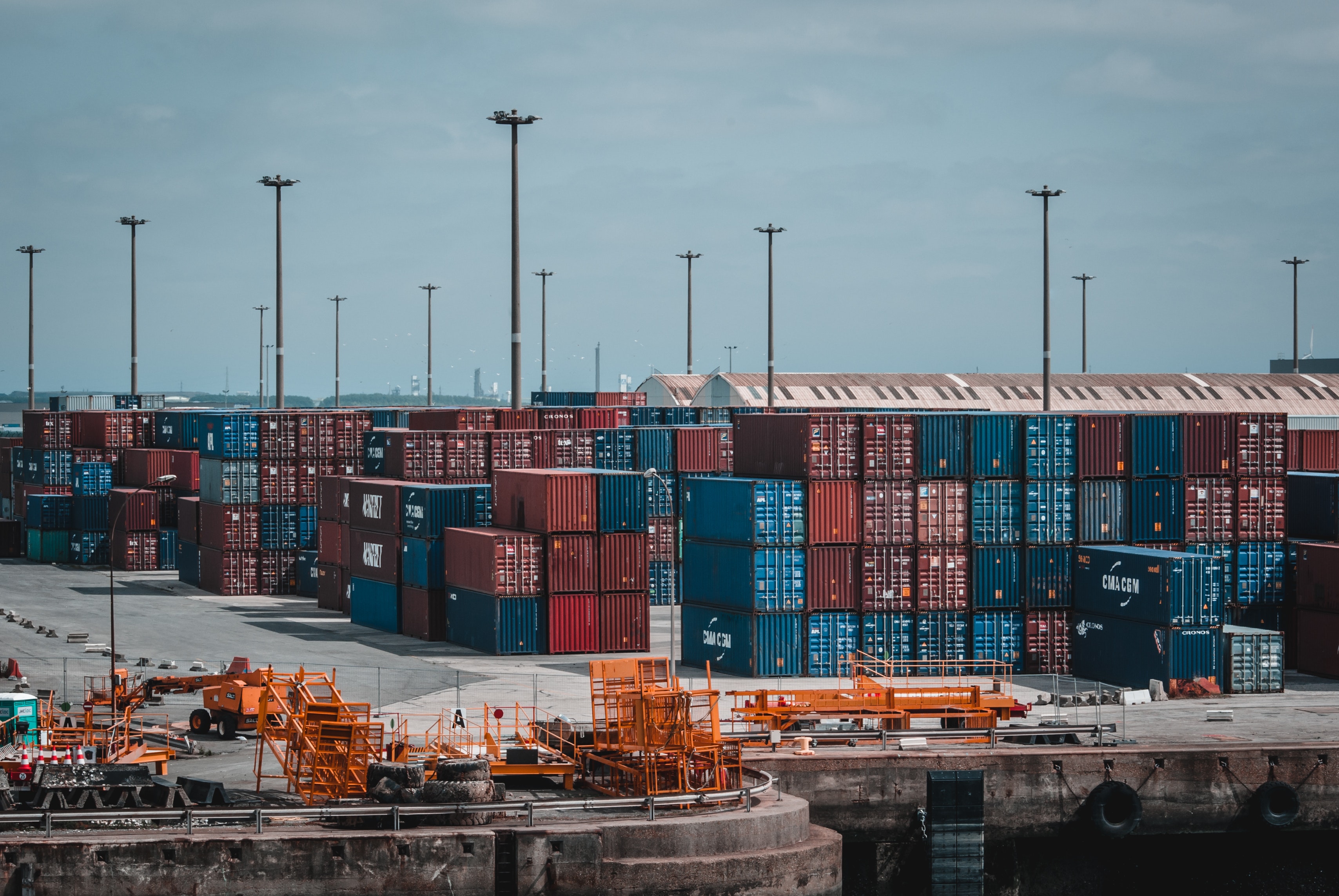The coronavirus pandemic brought immense supply chain challenges, arguably the most prevalent that modern businesses have ever seen. Now, even as we ease into a post-pandemic world, COVID-19’s impact on supply chain operations remains.
Some businesses met these global supply chain challenges better than others, with brands like Nike outperforming competitors in their first pandemic quarter. But what drew the line between businesses that suffered immensely and those that outperformed competitors?
Some organisations performed better by acting fast and making rapid adjustments to their supply chain operations. They were better prepared for the unknown and quick to improvise.
In other words, their supply chain was resilient. And that’s what we’re going to talk about in this article. Let’s look at how supply chain resiliency planning can help you prepare for the unexpected.
Is just-in time (JIT) manufacturing over?

Recent years have had a focus on just-in-time (JIT) manufacturing that was designed to minimise inventory expenditures while still meeting orders. The pandemic has caused many to think JIT might be at its end. However, evidence suggests that JIT is here to stay for the foreseeable future.
That might sound controversial because most supply chain challenges during the pandemic are partly correlated with lean manufacturing. But, as long as companies adapt their supply chain strategy to maintain efficiency, they can still implement JIT. This strategy entails building chain resilience.
One concern many business owners have about modern-day JIT is inventory shortages and they’re right to be worried. Many organisations couldn’t fill orders during the pandemic and some even had to halt production due to stock shortages. So how can businesses plan for these challenges?
One way to reduce shortages that isn’t new to the industry is supply chain diversification. Distributing inventory across multiple, strategically located fulfillment centers helps organisations maintain supply chain efficiency, even when unprecedented challenges arise. And sure, distributed inventories can’t entirely deter delays, but they’re critical to a larger framework, a framework for supply chain resiliency planning.
Semiconductor dependency: IoT and smart devices
You might have heard of the automotive sector’s challenges during the pandemic, primarily due to semiconductor chip shortages. Unfortunately, IoT and smart device manufacturing took a significant hit too.
And we’re not in the clear yet. Some predictions estimate that the global chip shortage will proceed into 2023. And the worst part is how many industries rely on semiconductors for manufacturing.
Apple’s delaying of the iPhone 12’s release due to chip shortages made quite the splash, but the likes of low-margin-processor manufacturers and dog washing businesses are suffering too. Moreover, many organisations rely on smart devices and IoT to streamline inventory management and fulfillment processes. So, businesses aren’t just losing out on integral components like chips but on crucial technology that accelerates supply chain operations.
Unfortunately, there’s no quick solution to the global semiconductor dependency. The U.S. has announced plans to streamline the chip supply chain with significant players like Intel stepping forward, which may provide added sourcing options for UK businesses down the road, but near-term benefits are uncertain. For now, the global market is still heavily reliant on South Korea and Taiwan, especially after fires and other concerns at plants in Japan.
Exploring new geographic sourcing regions

A few years ago, China was an excellent sourcing region for UK manufacturers and sellers. Trade concerns, coronavirus outbreaks, and import restrictions related to humanitarian policies have led organisations to begin reducing dependencies on China.
The drive for new manufacturing centres is onshoring some efforts, while increases are expected from nearby partners such as Germany and France, as well as emerging centres around the world.
At this point, it’s also important to note that cutting China out ultimately may not be wise, either. It has one of the largest economies with deep supplier networks and ports that operate with high velocity. So, it remains a strategically beneficial supply base for global companies.
Reduce your dependency, but don’t eliminate a leading source.
The need for supplier diversification
Exploring new sourcing regions is one step towards supplier diversification, but there are more avenues you might want to consider. The pandemic taught local businesses the dangers of single sourcing, i.e., even within a locality, relying on one supplier doesn’t guarantee supply chain resilience. In fact, 63% of businesses are currently investing in supplier diversification to enhance their chain’s resilience.
Earlier, I mentioned the role of distributed fulfillment networks in maintaining supply chain efficiency. Distributing your inventory also ties in nicely with supplier diversification; you can source each warehouse’s inventory from a different supplier nearest to the location.
That way, if one network runs into a sourcing issue, the next supplier can pick up the slack. The same holds true for carrier diversification, especially as “peak” season capacity issues (and related charges) risk becoming more permanent.
Investing in new technology for agility
Another hard lesson we learned from the pandemic is that you still can’t prepare for everything while you can prepare for everything. Planning for the unprecedented is a vital part of supply chain resilience, but there’s another critical point I’d like to highlight. Adaptation, which stems from agility and strategic response.
Nike is a prime example of swift adaptation during the pandemic. When faced with supply chain challenges brought by the pandemic, Nike leveraged predictive analytics to get ahead of its operations and mitigate the impact. The company has robust digital systems linked to their contractors, allowing Nike to identify the state of their supply chain quickly.
 Photo by Samuel Wölfl
Photo by Samuel Wölfl
Thus, they responded to the situation with high velocity. Nike rerouted deliveries from their brick-and-mortar stores to e-commerce fulfillment and identified which products they had in stock. They then adjusted their marketing strategy to promote the products they could stock.
The result? Their losses during the first quarter were less than some of their competitors. It’s an important lesson for B2B brands.
While we often think of Nike as a pure B2C play, it has a very broad customer base and relationship management requirements familiar to any B2B operation. You can take many of the same approaches to your supply chain changes, communication with customers, and disaster responses.
The success of Nike’s operational focus highlights the importance of investing in new technology for agility, but more importantly, it showcases the power of knowing your supply chain inside-out. While companies largely can achieve this through technology, a quick-response strategy is equally important for successful execution.
Supplier relationships: Treating every vendor with respect
A report by Gartner revealed that 77% of companies are improving supply chain resilience and agility by investing in more profound, more collaborative supplier relationships. And again, the pandemic highlighted the vitality of solid relationships with vendors.
Because when demand skyrocketed and shortages became inevitable, suppliers prioritised businesses with which they had strong relationships. A key aspect of resilience planning is to treat vendors with respect and establish meaningful relationships.
Beyond the obvious benefits of loyalty, cultivating strong supplier relationships improves collaboration and data transparency, increasing supply chain efficiency. You can respond swiftly to supply chain disruptions and minimise the impact by sharing vital data insights and working together.
Security means your supply chain must adapt

The pandemic was not kind to supply chain operations, and it taught businesses a hard lesson in the shortcomings of contingency efforts. While some companies reduced impact by responding swiftly to the new challenges, they succeeded because of existing systems in place. Their supply chains were resilient and flexible.
So, whether you’re sticking with JIT or moving forward more flexible operations and increasing on-hand inventory levels, supply chain resiliency planning remains critical. And here’s what to keep in mind:
- Data fuels high-velocity response and informed decision-making, so businesses must have robust digital systems in place. You need access to real-time supply chain data and predictive analytics to respond to disruptions and anticipate them, respectively
- Diversify your supply chain, including your fulfillment network and your suppliers. Additionally, if your organisation operates globally, look into diversifying your geographical sourcing
- Vendors are people first, businesses second. Establishing meaningful, mutually beneficial relationships with suppliers can help you both survive harsh times
Treat your supply chain partners and customers well to succeed. From onboarding through long-term management, relationships are key. If anything, COVID-19 taught us that everything can change in an instant, and the core of what we count on are the people who make modern e-commerce work.
Learn more about the steps you should take to improve supply chain resilience by downloading our checklist below.
About the author:
Jake Rheude is the Vice President of Marketing for Red Stag Fulfillment, an ecommerce fulfillment warehouse that was born out of ecommerce. He has years of experience in ecommerce and business development. In his free time, Jake enjoys reading about business and sharing his own experience with others.

